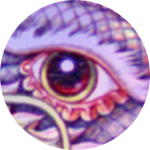i kinda pictured it being used as one hand blocks down as other hand is almost like a hook but uses the pointer finger knuckle as a strike to the temple with the back of the hand facingtowards you.
A BJJ player and notorious pimp, Da Big Deezy, in the Crenshaw district tried to "raise up" and "slap a ho" ..... I impaled him with my retractible naginata. I wish there were more groundfighters in the world. They make my arsenal that much more deadly. - john takeshi
LIKE FROG IN WELL LOOKING UP AT SKY,THINKING SEE ALL WORLD. - truthman



 Reply With Quote
Reply With Quote








